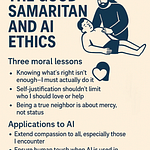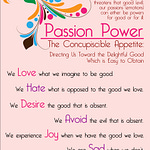Welcome to Shattering Illusions, where we uncover how illusions—old and new—threaten to mislead not only the AI industry but our very sense of reality. Today, we explore a chillingly persistent concept: the curse.
Why talk about curses in 2025, in a world driven by artificial intelligence and data? Because curses, whether literal or metaphorical, ancient or algorithmic, are still relevant. They're flowing through our speech, in our media, and—disturbingly—through the very platforms that promise to connect and empower us.
What Is a Curse?
Across cultures and history, the curse has been many things: a wish of evil, a mystical incantation, or a psychological phenomenon. We can distill three major views:
The Intention View: A curse is simply a wish of evil upon another. It's an expression of the curser's inner state, regardless of any real effect.
The Spiritual View: A curse involves not only intention but also the invocation of a spiritual power—be it divine, demonic, ancestral, or energetic (as in a psychic or spiritual energy)—to bring about actual harm. This adheres to a curse path of causation of “Evil wish —> Spiritual power —> Natural effects in the world.”
The Psychological/Sociological View: A curse is a social-psychological construct. Drawing on the nocebo effect and self-fulfilling prophecies, the belief in being cursed can lead to real outcomes—anxiety, failure, misfortune—without any mystical forces at play. This adheres to a path of causation of “Evil wish —> Natural power or phenomenon —> Natural effects in the world.”
What unites all three is this: curses are expressions of wishes of harm. And wishes of harm, whether spiritually summoned or psychologically internalized, have real-world consequences.
Curses Across Religions and Cultures
Many world religions and traditions warn against curses:
Wicca preaches the “harm none” ethic and warns of rebound of spiritual energy (the “Rule of Three”).
Middle Eastern traditions warn against the evil eye—a glance powered by envy.
Chinese customs have at times prohibited “Gu poison,” seen as spiritually dangerous.
Hinduism and Buddhism, grounded in the belief in karma, discourage harm due to its spiritual consequences. This can lead to discouraging wishes of evil on others.
African and Native American traditions view curses as real threats tied to witchcraft.
Judaism and Christianity forbid certain curses—especially those spoken against authority, God, or parents.
Even secular societies, which generally do not believe in spiritual power behind curses, invoke curse-like language: the “resource curse” in economics, for example, describing a nation's misfortune despite natural wealth.
Despite theological and cultural variation, there is a common thread: curses are ethically problematic (but possibly permitted under certain circumstances), potentially harmful, and spiritually serious.
A Christian View of Curses
In Christianity, curses are real—but only some are effective. The most potent curses are God's own judgments, not unjust curses of angry individuals.
The Bible forbids cursing others (Exodus 21:17, Romans 12:14) not because it always causes harm, but because it springs from a moral failure: a failure to love. This is the failure we should guard against in ourselves. Jesus calls His followers to bless those who curse them, not curse them back in return (Luke 6:28).
Curses made "without cause," Proverbs says, “does not come to rest” (Proverbs 26:2). In other words, without justification, curses are powerless. Even demonic activity, which some associate with curses, is constrained—used by God in certain cases for specific purposes (see Saul’s torment in 1 Samuel 16:14) but not something which can be part of an effective curse by anyone without cause.
And here's the good news: in the Christian worldview, Christ breaks our curses—especially the ones that matter most, like sin and death (Galatians 3:13). Christians don't live under the shadow of a curse. They live under a promise of redemption.
AI: The New Medium of the Curse?
What does this ancient concept have to do with modern AI?
Plenty.
Large language models and algorithmic systems today amplify human expression—including curses. If someone wishes harm on another and posts about it online, AI may promote that content. Not because it’s true, but because it drives engagement.
We are exposed daily to algorithmically-selected “curses”: tweets, comments, and headlines filled with hatred, rage, and ill will toward others. AI often decides what we see and how often we see it. And in doing so, it may:
Normalize curses: the more we see people wishing harm on others, the less shocking it becomes.
Encourage imitation: seeing someone curse those we dislike can nudge us to do the same.
Spread misinformation: AI systems often surface falsehoods that provoke anger—leading to unjustified outrage, inaccurate moral judgments, and even possibly undeserved wishes of harm.
Create nocebo effects: Through confirmation bias, AI can feed us content that reinforces our fears, making us feel “cursed” or doomed.
In short, AI can act like the intermediary of a curse.
Toward Redemption in the Age of AI
Curses in the ancient world were problematic, regardless of the involvement (or not) of spiritual powers. They represented judgments of God on humanity (whether expressed by God or by his messengers) and human ill-will toward each other. Today, AI enables problems of a different kind—between love of God and neighbor and digital engagement metrics.
Just as the Christian gospel promises redemption from real spiritual curses, we can also seek redemption from digital ones with AI:
We must seek truth, not just validation. Truth may hurt, but it heals and liberates (John 8:31-32). Lies, even pleasant ones, can enslave.
We must cultivate love, not malice. Cursing others—even those we dislike—harms our character.
We must recognize AI as a tool, not an oracle. We should use it to build ourselves up and avoid the moral depravity that we ourselves experience from cursing. This can be done by using AI to filter what we see according to our consciously chosen needs and preferences instead of passively accepting the information it feeds us.
In the cross of Christ, we see two seemingly opposite things united: the curse of sin and the love of God. That paradox—curse absorbed, love expressed—is the pattern for breaking curses today, even in the age of AI: the pattern of redemptive love overcoming the curses in our lives.
Let’s be people who break the cycle, not perpetuate it.








Share this post